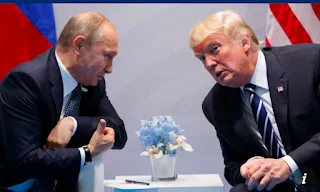Dear 222 News viewers, sponsored by smileband,
Raging LA Wildfires Force Thousands to Flee as Destruction Spans 23 Football Pitches
Los Angeles is facing one of its worst wildfire seasons in years, as relentless flames continue to force thousands of residents to abandon their homes. The fires, fueled by dry conditions and strong winds, have already destroyed an area equivalent to 23 football pitches, leaving a trail of devastation in their wake.
Communities Evacuated Amid Growing Danger
Firefighters are battling tirelessly to contain the inferno, which has swept through residential neighborhoods, destroying homes and reducing once-thriving communities to ash. Evacuation orders have been issued for several areas, with authorities warning residents to leave immediately or risk being trapped by rapidly advancing flames.
“We lost everything,” said one evacuee, whose home was engulfed within hours. “It’s devastating to see years of memories reduced to rubble.”
Unfavorable Weather Conditions Fuel the Flames
The wildfires are being driven by strong Santa Ana winds and critically low humidity levels, creating a perfect storm for rapid fire spread. These conditions, combined with the region’s ongoing drought, have turned the landscape into a tinderbox, ready to ignite at the slightest spark.
According to the Los Angeles Fire Department, over 1,200 firefighters have been deployed to combat the flames, with air support providing water drops to slow the fire’s advance. Despite these efforts, containment remains challenging due to shifting winds and steep terrain.
Impact on Infrastructure and Health
The fires have not only destroyed homes but also severely impacted local infrastructure. Roads are closed, power lines are down, and thousands of residents are without electricity. Thick smoke blankets the area, posing serious health risks to those with respiratory conditions.
Hospitals have reported an uptick in patients suffering from smoke inhalation, and authorities are urging residents to wear masks and stay indoors if possible. Air quality in Los Angeles and surrounding areas has plummeted to hazardous levels.
Climate Change Concerns Intensify
Experts are linking the intensity and frequency of California’s wildfires to climate change. Rising global temperatures, prolonged droughts, and increased vegetation drying are creating conditions ripe for such disasters.
“This is the new normal,” warned a climate scientist at UCLA. “Unless we address the root causes, these fires will continue to devastate communities year after year.”
Relief Efforts Underway
Emergency shelters have been set up to accommodate displaced families, and local charities are working to provide food, clothing, and other essentials. However, many evacuees worry about the long-term recovery process, especially those who have lost their homes and livelihoods.
As the fires rage on, the resilience of the affected communities is being tested. For now, the priority remains saving lives and containing the flames, but the road to recovery will undoubtedly be long and arduous.
A Call for Action
The ongoing devastation in Los Angeles serves as a grim reminder of the urgent need to address climate change and invest in wildfire prevention measures. For those on the front lines, the battle continues, with hopes pinned on favorable weather and the tireless efforts of emergency responders.
As the embers smolder, the question remains: how can California, and the world, adapt to a future where such disasters become increasingly common.
Attached is a news article regarding the wild fires in LA
https://www.bbc.com/news/articles/cj029138n4zo.amp
Article written and configured by Christopher Stanley
<!-- Google tag (gtag.js) --> <script async src="https://www.googletagmanager.com/gtag/js?id=G-XDGJVZXVQ4"></script> <script> window.dataLayer = window.dataLayer || []; function gtag(){dataLayer.push(arguments);} gtag('js', new Date()); gtag('config', 'G-XDGJVZXVQ4'); </script>
<script src="https://cdn-eu.pagesense.io/js/smilebandltd/45e5a7e3cddc4e92ba91fba8dc










